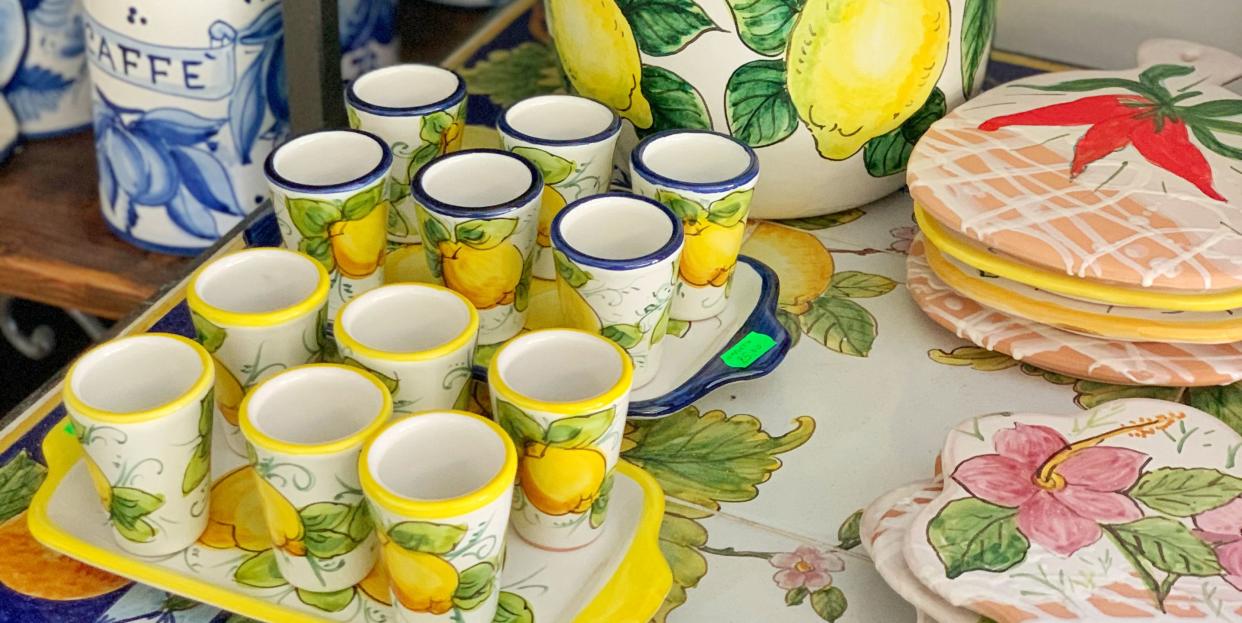These Are the Handpainted Italian Ceramics You Need to Add to Your Tabletop

Terra cotta, earthenware, majolica, porcelain—Italian ceramics come in many forms. And while everyone knows that ‘Made in Italy’ denotes quality, you might not realize how many traditions there are when it comes to the creation of tabletop and other design items. That’s because Italian ceramic traditions have historically been—and still are—regional. In places where pottery is produced, such as Tuscany, Umbria, the Amalfi Coast, Sicily, and Puglia, there might be some overlap, but you’re sure to find different styles, forms, and designs. Consider the fact that until 1870, Italy wasn’t a unified country but rather a number of kingdoms and papal states and it begins to make sense.
Majolica, the term for tin-glazed earthenware, was brought to Italy from Moorish Spain during the Medieval Ages. A guide to the collections of the Museo Internazionale delle Ceramiche in Faenza describes these early examples of pottery as “richly decorated with zoomorphic, vegetal, epigraphic and armorial motifs, often devoted to the families and illustrious persons in town.” During the Renaissance, ceramic artists began to paint idealized women and eventually developed a style known as istorie, which depict narratives from mythology, the Bible, or Roman history.
The style can still be found in antique shops throughout Italy and is being reinterpreted by artisans like Stefania Portarena, who runs a small ceramics workshop and boutique called L’Arpia in Orvieto. She makes tiles, lamps, plates, and pitchers decorated with fantastical creatures such as harpies, which bear the face of a woman and body of a bird. “What inspires me is Medieval ceramics, from 1000 to 1300. Originally, Medieval ceramics were used for pitchers, bowls, glasses—things to use every day in the kitchen—and the designs were very simple, almost childlike,” Portarena tells House Beautiful, explaining that Medieval ceramics often featured leaves, geometric designs, knots, harpies, and fish. “I take inspiration from this period and reinterpret and modernize it.”
Portarena is far from the only artisan modernizing Italy’s age-old traditions. Walk into a chic concept shop or home decor boutique anywhere in Italy and you might see dishes with paint splatters reminiscent of a Jackson Pollock painting, but they likely came from a workshop in Puglia, the heel of the so-called Italian boot.
“Now it’s a popular style, but in the beginning of the last century, in the ‘20s and ‘30s, it was salvaging, a way not to throw away the stuff that came out badly,” Enza Fasano, proprietor of the namesake boutique in Puglia, explained, referring to the paint-splattered dishes. Today they may embody the rustic-chic aesthetic beloved by Instagram influencers and luxury resorts like Borgo Egnazia, but originally they were just plain rustic. “It was a reproduction of our old tradition that was done with green splatters, and many years ago we began to color these splatters blue, orange, green, red, purple—all the colors that were in style,” Fasano said. People travel from all over the world to visit her shop in the town of Grottaglie, which became known for pottery thanks to her father Nicola, who brought his ceramics to a design fair in Milan in 1964 and started a movement to reclaim an artisan tradition that was being threatened by the advent of plastic.
Aside from Umbria and Puglia, pottery obsessives should visit the Amalfi Coast and Tuscany. For the cheerful plates painted in bright Mediterranean colors that feature folksy hens, fish, and other animals, you’ll have to go to Vietri Sul Mare on the Amalfi Coast. The town is full of pottery studios, including Ceramica Artistica Solimene, a wildly successful family-run studio whose plates can be seen at high-end hotels and trendy restaurants. On the nearby island of Ischia, Kèramos sells hand-made pottery decorated with fruit and flowers common in the area, such as lemons, pomegranates, grapes, and sunflowers, as well as scenes of the island.
In Tuscany, you might see similar designs as well as geometric patterns, though the colors tend to be a bit more muted than the ones you see on the Amalfi Coast. Though Florence is full of shops selling ceramics, most of the production is done in towns like Sesto Fiorentino and Certaldo Alto. Seek out Ceramiche Artesia and you might see one of the owners, Cinzia Orsi and Monica Lazzerini, painting a plate. They’re among the dedicated Italian artisans keeping the art of making hand-painted ceramics alive.
Follow House Beautiful on Instagram.
You Might Also Like

